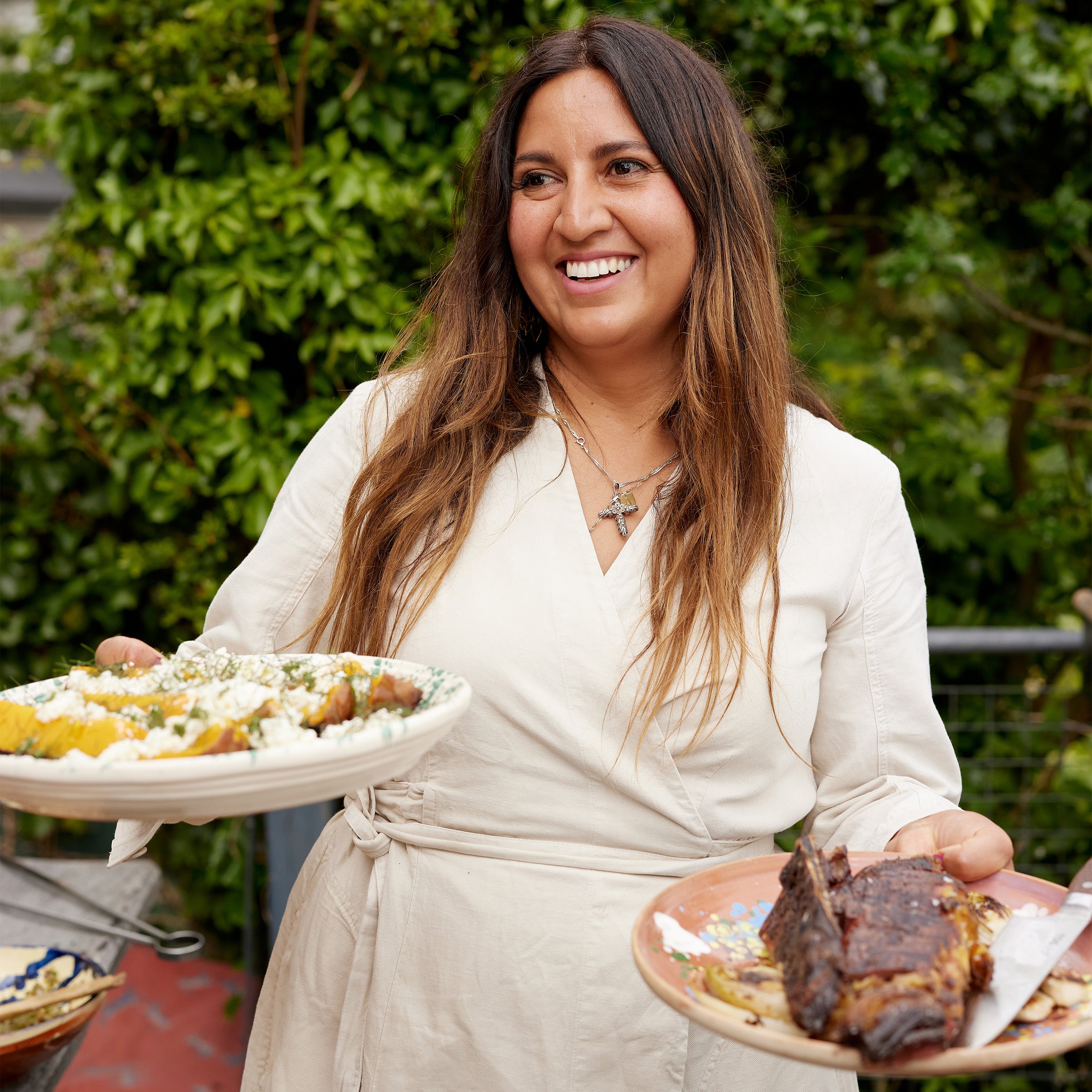In Japan, every task has a dedicated knife.
From the chestnut knife to the eel knife, this is a guide to the traditional Japanese knives as well as some more modern shapes like the Santoku that have been developed for broader appeal.

Japanese knives have hugely increased in popularity in the West over the last 20 years due to their incredible craftsmanship and performance. The designs have come about from the requirements of Japanese cuisine so there are many specialised fish knives, noodle knife, sushi knife etc. Our approach at TOG is to combine British design with Japanese craftsmanship to produce knives that have the best possible quality but which are designed for those people that are using them.

KURIMUKI
Possibly the most specialised knife of all time, the Kurimuki was created for peeling chestnuts. However, it's also used for peeling small vegetables and fruit.

KO-BOCHO
Literally meaning 'Small knife' this is a tiny paring / trimming knife with a 7 to 9cm blade. These are sometimes also called 'office' knives in the West as they were also used for opening letters and packages. This knife gives the most control and precision of any knife and can be used when holding food up in the air as well as down on a chopping board. A key knife for most professional chefs.

PETTY
The Petty knife is a small utility knife. Its narrow blade allows you to turn the knife during the cut eg. for cutting round an avocado stone. Very useful and popular small knife perfectly suited for slicing and chopping small fruit and veg and for light butchery.

KIRITSUKE PETTY
Same as a standard Petty knife but with 'Kiritsuke' style diagonal tip.

MUKIMONO
A small, thin bladed, light, precision knife for 'Mukimono', the Japanese art of creating decorative garnishes and for 'Kazari-giri', the art of decorative vegetable carving.

AJIKIRI
Also known as 'Ko Deba' this is a small version of the Deba fish filleting knife designed for the same use but for smaller fish. However, it has a thinner blade than the Deba so can be used for a wider variety of tasks.

HONESUKI
Typical blade length: 150mm
This boning knife is stiff and strong and is particularly suited to poultry. The tip is great for cutting through tough animal skin against a board. Also good for slicing cheese!

HANKOTSU
Japanese boning knife that normally has a Western style riveted handle. Has a rigid strong blade designed to be held in a reverse grip for butchering hanging carcasses.

FUNAYUKI
A knife frequently used on boats by fishermen. It looks a bit like a Deba but the blade is thinner and lighter, so the knife is more agile and versatile. It's used for cleaning, filleting and quality testing small to medium size fish.

DEBA
One of the three most widely used traditional Japanese knives, the deba is used for filleting fish. It has a thick, rigid, chisel-ground single bevel blade that can slide along next to the skin. Its weight means it can easily de-head fish too.

UNAGISAKI BOCHO
A knife just for eel! Unagi is extremely popular in Japan and there's a knife just for filleting them. The sharp tip of the knife is pushed into the eel near the head. Then the knife is slid along the length of the eel to open up the entire length of the fish.

SANTOKU
A more modern Japanese knife designed to be as versatile as possible and have global appeal. It has a thin, mid-size blade with a straight section towards the heel for chopping and quite a wide blade all the way along the length. The name literally means 'three virtues' - some people say that refers to meat, fish and vegetables and others say it refers to slicing, chopping and dicing.

USUBA
One of the three classic Japanese knives, the usuba is solely for vegetable preparation. It has a rigid, single bevel straight blade extremely sharp blade for fine cutting of vegetables. The blade is thicker than the similar Nakiri.

KAMAGATA USUBA
A variation on the classic Usuba knife originating from the Kansai region of Japan (Osaka & Kyoto).

BUNKA
Recently gaining popularity in the West, this is a multipurpose mid-size double-bevel knife with a Kiritsuke-style diagonal tip. The tip makes for precise work and the thick blade makes the knife great for chopping.

NAKIRI
The Nakiri is a more modern, more multipurpose, more Westernised version of the classic Usuba knife. They are both designed for chopping vegetables and both have rectangular blades with straight edges. Unlike the Usuba, the Nakiri has a double-bevel thin blade and a rounded off tip (to prevent it sticking into the chopping board). Because of the large area, this knife can be used to carry prepared food around the kitchen.

GYUTO
The Japanese version of the Western chef's knife, the Gyuto has a long double bevel blade and for many chefs it is their go-to, do-everything knife. The long blade means it can cut larger items but it can also be lightweight and precise. 'Gyuto' literally means 'Cow Sword' - reflecting it original purpose to cut meat. It has since become adopted as a super-versatile professional workhorse.

KIRITSUKE
This single-bevel rigid Japanese knife has the long slicing blade of the Yanagiba (Sushi slicer) and also the straight edge of the Usuba (vegetable knife). It can therefore perform the functions of both these knives, but requires a great deal of skill to use. For this reason it was traditionally reserved for the head chef in a restaurant.

KIRITSUKE GYUTO
This is a variation on the Gyuto chef's knife but with a Kiritsuke-style diagonal tip. It is double bevel and has a more curved, lighter blade compared to the traditional Kiritsuke. This makes it much more versatile and easier to use.

CHUKA BOCHO
This is the Japanese name for the Chinese cleaver. This do-everything knife has been used in China for thousands of years and was introduced into Japan after the Second World War. It has a thin blade and is designed for general food preparation, not cutting through bone. The Japanese version has a very similar blade to the Chinese original, but with a Japanese handle.

SOBAKIRI
Very specialised knife with a completely straight blade for cutting Soba noodles.

SUSHIKIRI
Specialised knife for cutting Sushi. The long, deep, curved blade is designed to slice through sushi rolls without squashing them.

PANKIRI
Bread has not historically been eaten in Japan so the Pankiri (bread knife) is a design that was imported into the country after the Second World War when bread started to increase in popularity. In some ways serrations can make up for knives that are not sharp - in Japan, the philosophy is to keep your knives sharp instead!

YANAGIBA
One of the 3 classic Japanese kitchen knives, the Yanagiba (or 'Yanagi') has a single bevel, long, thin blade suited perfectly to slicing raw fish (Sashimi). The length of the blade means that the fish can be sliced in one motion, rather than 'sawing' backwards and forwards, leaving a perfectly cut surface on the fish.

TAKOHIKI
The Takohiki is a square-tipped version of the Yanagiba that originates from the Kanto (Tokyo) region of Japan. Despite 'tako' meaning 'octopus', this is not an octopus knife, it is a dedicated Sashimi knife.

SUJIHIKI
The Sujihiki (or 'Suji') is a double bevel version of the Yanagiba. It is similarly used for slicing but is more versatile as the thinner blade will go through more rigid foods, as well as raw fish.

MAGURO BOCHO
Highly specialised knife for filleting whole tuna ('Maguro'). These knives can cost up to USD15,000 each and have blades as long as 1.5metres.




